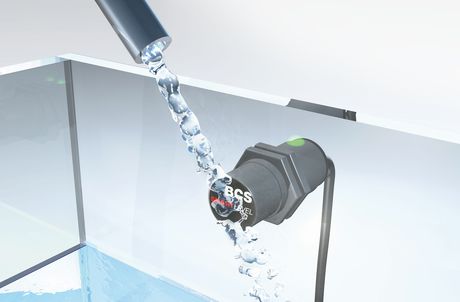The often overlooked proximity sensor

The term ‘proximity sensor’ usually refers to an inductive proximity sensor or metal sensor — the inductive sensor is the most commonly utilised sensor in automation. There are, however, other sensing technologies that use the term ‘proximity’ in describing the sensing mode. These include diffuse or proximity photoelectric sensors that use the reflectivity of the object to change states and ultrasonic sensors that use high-frequency soundwaves to detect objects. All of these sensors detect objects that are in close proximity to the sensor without making physical contact.
One of the most overlooked or forgotten proximity sensors on the market today is the capacitive sensor. Why? Perhaps it is because they have a bad reputation dating back to when they were first released years ago, as they were more susceptible to noise than most sensors. With advancements in technology, this is no longer the case.
Capacitive sensors are versatile in solving numerous applications and can detect many types of objects such as glass, wood, paper, plastics and ceramics. ‘Object detection’ capacitive sensors are easily identified by the flush mounting or shielded face of the sensor. Shielding causes the electrostatic field to be short and conical shaped, much like the shielded version of the inductive proximity sensor.
Just as there are non-flush or unshielded inductive sensors, there are also non-flush capacitive sensors, and the mounting and housing looks the same. The non-flush capacitive sensors have a large spherical field that allows them to be used in level detection applications. Since capacitive sensors can detect virtually anything, they can detect levels of liquids including water, oil, glue and so forth, and they can detect levels of solids like plastic granules, soap powder, sand and almost everything else. Levels can be detected either directly where the sensor touches the medium or indirectly where the sensor senses the medium through a nonmetallic container wall.
With improvements in capacitive technology, sensors have been designed that can compensate for foaming, material build-up and filming of water-based highly conductive liquids. These ‘smart’ capacitive sensors are based on the conductivity of liquids, and they can reliably actuate when sensing aggressive acids such as hydrochloric, sulfuric and hydrofluoric acids. In addition, these sensors can detect liquids through glass or plastic walls up to 10 mm thick, are unaffected by moisture and require little or no cleaning in these applications.

The sensing distance of a capacitive sensor is determined by several factors including the sensing face area — the larger the better. The next factor is the material property of the object to be sensed or its dielectric strength: the higher the dielectric constant, the greater the sensing distance. Finally, the size of the target affects the sensing range. Just as with an inductive sensor, the target will ideally be equal to or larger in size than the sensor.
Most capacitive sensors have a potentiometer to allow adjustment of the sensitivity of the sensor to reliably detect the target. The maximum quoted sensing distance of a capacitive sensor is based on a metal target, and thus there is a reduction factor for nonmetal targets.
Although capacitive sensors can detect metal, inductive sensors should be used for these applications for maximum system reliability. Capacitive sensors are ideal for detecting nonmetallic objects at close ranges, usually less than 30 mm and for detecting hidden or inaccessible materials or features.
Just remember, there is one other proximity sensor that may solve your application… the capacitive one!
Encoders in motion control applications: Noise and signal distortion considerations
To ensure clarity of signal from your encoder, and avoid excessive electrical noise, there are...
Smart, energy-efficient robot grippers cut production costs
Researchers have developed a new type of robot gripper technology that needs 90% less electricity...
Cobots reduce employee lifting by 50%
As one of the world's largest meat producers, Danish Crown faces challenges in handling and...








